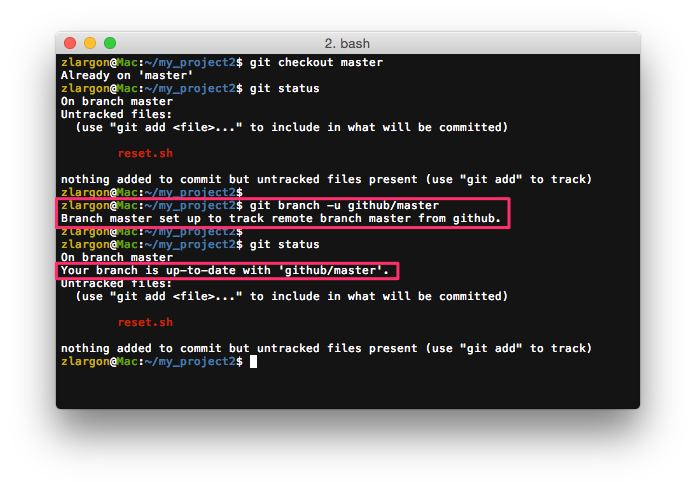

Is there a way to automate that upstream setting to the pushed-to branch without actually typing it ? this is what helps me automatically trimming merged branches $ git push -d origin my-branch # this is done automatically after merging * my-branch 3b3a404 Merge branch 'test-push' into 'main' * my-branch 3b3a404 Merge branch 'test-push' into 'main'īranch 'my-branch' set up to track remote branch 'my-branch' from 'origin'. Main 3b3a404 Merge branch 'test-push' into 'main' If I manually set the upstream of a branch (through -set-upstream-to), then I can see my trim script working again but that defies the purpose of using fault set to current. Since a few days, I noticed all my branches aren't deleted anymore and that comes from the fact when pushing, the upstream is "guessed" but never set. git branch -u origin/master Branch 'master' set up. Another benefit of setting upstream is to indicate the unsynced commits between the local and the remote branches.
git push -ugit branch -u origin/master Branch 'master' set up to track remote branch 'master' from 'origin'. The easiest way to set the upstream branch is to use the git push command with the -u option for upstream branch. Some times ago I switched to fault current, and the feature is really better than fault upstream or simple. To set-upstream when the remote branch already exists, use the below command.

Some repositories I work with enforce squashing pull requests, therefore merged commit are never made locally, and I have no way of linking content of new commits and contents of my local branches.
GIT SET UPSTREAM HOW TO
We have also seen how to set an existing upstream branch for local branch using git branch command.I used to delete my branches automatically with the indication of git fetch -p plus some git plumbing command¹, and matching for a pattern then deleting matched branches. Let us say you have local branch named dev and want to create upstream branch origin/dev, then here is the command to do it.
git push -set-upstreamYou can also use set-upstream option to set upstream branch. In this article, we have learnt how to set new upstream branch for local branches using git push command. Here is the syntax to create upstream branch with git push. Now origin/development will be set as upstream branch of local branch dev2. Let us say you have an upstream origin/development and you want to set local branch dev2 to that upstream branch, then first checkout to dev2 branch and run the above command. If your upstream already exists, and you want to set an existing branch (e.g dev2) to link to that upstream branch, then you need to use git branch command as shown below $ git branch -u / Set Upstream Branch for existing local branch You can also use –set-upstream option to set upstream branch $ git push -set-upstream 2022: Git 2.37 proposes: git config -global toSetupRemote true toSetupRemote. Here is the syntax to create upstream branch with git push $ git push -u Here are the different use cases to set upstream branch in git. Set upstream branch using the git push command with the -u extension or use the longer version -set-upstream. Switch to it using the checkout command with the -b. It is also useful in knowing the unsynced commits between you local and remote branch.Īlso read : How to Convert Callback into Promise Method 1: Set Upstream Branch Using Git Push 1.
GIT SET UPSTREAM CODE
Upstream branches make it easy to push and pull code to & from local branch to remote branch. It is also known as remote tracking branch and is basically the branch tracked on repository by your local branch.
git pullPlease specify which branch you want to rebase against.

GIT SET UPSTREAM UPDATE
Upstream branch is a remote branch that corresponds to your local remote branch. Update : I just learned about the new git setting: toSetupRemote I learned it from here, and so can you There is no tracking information for the current branch. In this article, we will look at how to set upstream branch in Git. While working with Git, it can be very useful to learn about upstream branches, since they are commonly required to track remote branches.


 0 kommentar(er)
0 kommentar(er)
